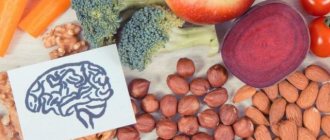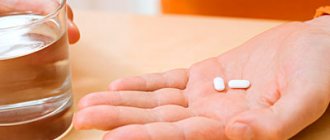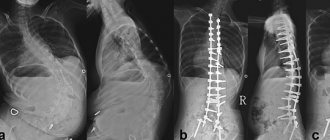Depression is one of the most common diseases. In terms of prevalence, it is second only to cardiovascular diseases. And of all those suffering from depression, only no more than 20% seek qualified help.
In this article we will tell you about all the drugs used to treat depression.
All medications with antidepressant effects can be divided into several groups:
- Antidepressants.
- Normotimic drugs.
- Neuroleptics.
- Tranquilizers.
- Nootropics and metabolic agents.
- Herbal remedies.
- Amino acids.
- Psychostimulants.
Normotimic drugs
Medicines in this group have an antidepressant effect only in cases where the depressive state is caused by chronic affective diseases, such as bipolar affective disorder (BD, manic-depressive psychosis), cyclothymia, dysthymia, schizoaffective disorder. Most commonly used medications:
- Carbamazepine (finlepsin)
- Depakine chrono
- Lamotrigine (Lamictal)
- Lithium carbonate
Sexual dysfunction
– Sexual dysfunction in patients with depression is caused by the disease and the medications prescribed to treat it. All antidepressants that affect serotonin or norepinephrine uptake cause sexual dysfunction. There is no evidence that SSRIs and SSRIs are less effective in this area than TCAs.
– The most common causes of sexual dysfunction are citalopram, fluoxetine, paroxetine, sertraline and venlafaxine. Imipramine is the same, but weaker than the five named antidepressants.
– Bupropion has the weakest sexual side effects compared to other modern antidepressants.
Neuroleptics
Despite the fact that most antipsychotic drugs depress the nervous system, among them there are drugs with antidepressant effects:
- Flupenthixol (fluanxol).
It has an antidepressant effect only when administered in small doses (less than 2 mg per day).
- Aripiprazole.
Effective for depression in bipolar affective disorder and schizitypal disorders.
- Levomepromazine (tizercin).
Prescribed for endogenous depression accompanied by insomnia.
Effective drugs for depression
Phenazepam
This is perhaps the most common drug in addiction medicine and psychiatry.
However, it is popular not only because it is highly effective in the treatment of anxiety disorders, but also because it is a dangerous pharmaceutical drug that causes addiction. That is why the duration of the course of treatment and dosage are controlled by the doctor. You cannot buy Phenazepam at a pharmacy without a doctor's prescription. This is a benzodiazepine that affects the central nervous system and is a potent drug. Today, the tranquilizer is used less and less, as it has a fairly large list of side effects, including drug addiction. It has a sedative and hypnotic effect.
Afobazole
An innovative modern drug is used for depression and neurosis. It eliminates anxiety, restlessness, relieves tension and stress, does not cause drowsiness, and has a minimum of side effects. The medication is a neuroprotector, protects nerve cells, stabilizes GABA receptors.
Mexidol
The purpose of antioxidants is to protect the body from dangerous substances that damage cells and adversely affect human health. The drug is prescribed to patients after a head injury, in the presence of abnormalities in the cerebral circulation, or stress. Mexidol is used in the treatment of encephalopathy, ischemic heart disease and VSD.
Magnesium
Our body cannot function normally without magnesium. This substance is involved not only in metabolic processes, but also affects the functioning of the central nervous system. That is why it is necessary to compensate for the existing magnesium deficiency in cases of depressive disorders.
Quetiapine
The drug affects serotonin receptors to a greater extent than dopamine receptors. Therefore, for depression it is prescribed quite rarely, or in minimal doses. Most often used for more severe illnesses, dementia, Alzheimer's or Parkinson's disease. Contraindications are oncology, hypotension, heart attack, diseases of the cardiovascular system and liver.
Amitriptyline
The drug increases the concentration of norepinephrine and serotonin and inhibits their reuptake. It is used in the presence of psycho-emotional disorders, psychosis, anxiety, insomnia, depression. It is not recommended to take if you have binge drinking and alcoholism, gastrointestinal diseases, or pregnancy.
Atarax
Inhibits the work of the central nervous system, is prescribed for mental disorders, psychomotor agitation, nervousness, anxiety, irritability. Do not use during pregnancy or individual intolerance to the components of the drug.
Tranquilizers
- Bromodihydrochlorophenylbenzodiazepine (phenazepam).
The drug of choice for neurotic conditions with depression and post-stress conditions. That is, in cases where short-term treatment is required.
- Clonazepam.
Strong anti-anxiety and sedative effect. When taken for a long time it causes dependence.
- Alprazolam.
Prescribed for anxiety and depression. Recommended for short courses (no more than 10 days) due to the risk of developing addiction and dependence.
Antidepressants
The most important role in the process of drug treatment of depression is played by antidepressants - drugs that systemically improve the patient’s condition, relieving symptoms of depression: emotional disorders, motor and cognitive disorders (memory, attention, thinking), as well as somatic and autonomic manifestations of depression.
Antidepressants can also be effective in the treatment of anxiety, eating disorders, obsessive disorders, vegetative crises, and in eliminating pain of various origins, for example, rheumatism, since antidepressants usually increase the threshold of pain sensitivity.
| Find out more: Types of depression |
The choice of antidepressant for the treatment of depression is primarily determined by the clinical picture of the disease, although it should be kept in mind that those antidepressants that have been effective in the past or have successfully helped family members of the patient are likely to be most useful. Often, selecting an antidepressant that is adequate to the patient’s condition can take quite a long time and on average takes two to three weeks; if the dosage is adjusted, this period can increase to six to eight weeks. Patience is required from both the doctor and the patient, both in terms of the timing of the expected effect and reasonable tactics in case of side effects. Usually the latter occur in the first days of therapy, and their severity can be reduced by changing the dose of the drug or prescribing correctors.
Basic criteria for choosing an antidepressant:
- Clinical picture of depression based on the leading modality of affect
- Effectiveness of an antidepressant in relieving past episodes of depression
- The effectiveness of an antidepressant in relieving depression in close relatives of the patient
- Minimal side effects, tolerance to specific side effects
- No somatic contraindications
- Results of hormonal, neurophysiological, pathopsychological and neuropsychological studies
- Economic feasibility
- Balanced effects on the serotonergic and noradrenergic neurotransmitter systems
- Patient's age
- No negative interactions with other medications used to treat the patient
In practice, the main difficulties in using antidepressants are that their dose is not insufficient in patients with severe depression and not too high in patients with questionable and mild depression (Bochner F., et al., 2000).
The effect of an antidepressant usually appears 2 weeks after its administration, but a more pronounced therapeutic effect may require 6 weeks or more.
In more than a third of patients suffering from depression, the main reason for stopping taking antidepressants and, therefore, an important factor contributing to the formation of stable chronic depression are side effects that develop during the first stage of taking antidepressants. Among the side effects that are the most common reasons for stopping therapy are usually: constant feeling of nausea, weight gain, palpitations, drowsiness or insomnia, sexual disorders, weakness, headache. Often, a person suffering from depression agrees to treatment only with an antidepressant that has a minimum number of side effects. Such tactics for treating depression are usually ineffective.
The main reasons for stopping taking an antidepressant are:
- Side effects of therapy, especially gastrointestinal (nausea, vomiting, flatulence, etc.), cardiological (palpitations, arrhythmias, orthostatic hypotension, etc.), neurological (headache, tremor, sweating, etc.) endocrinological (weight gain, changes in the menstrual cycle etc.), manifestations of sexual dysfunction.
- Decrease in the patient’s quality of life due to taking an antidepressant (the need for long-term use of the drug, its high cost, refusal to drink alcohol, etc.).
- Lack of rapid therapeutic effect of the drug, its inadequate dosage.
- Concerns regarding the development of dependence with long-term use of the drug.
- Negative interaction with other medications (tranquilizers, antipsychotics, cardiovascular drugs, etc.).
- Temporary improvement in the patient's condition.
- There is no information about the required duration of antidepressant therapy, including the stage of long-term maintenance therapy and therapy aimed at preventing relapse of depression.
- Negative suggestibility of the patient regarding the occurrence of possible side effects of the drug (annotations on the drugs, opinions of other patients, close relatives, etc.).
- Belief in one's own strength to combat depression, psychologization of depression, orthodox religiosity, or belief in the effectiveness of psychotherapy.
- Adherence to alternative methods of therapy (non-traditional therapy).
In cases of a negative result, the doctor may increase the dose of the drug, and it should be remembered that the most common mistakes in the treatment of depression are treatment with low doses of an antidepressant and its rapid discontinuation after the patient’s condition improves.
For treatment-resistant depression, a psychiatrist may replace one antidepressant with another, use a combination of them, intensify psychotherapeutic intervention, or use another biological treatment method, such as electroconvulsive therapy. In the case of particularly resistant conditions, clarification of the diagnosis and active treatment of concomitant diseases are required: cardiovascular, gastroenterological, endocrine, etc. Particular caution during antidepressant therapy should be exercised in the presence of pregnancy, liver disease, kidney disease, or indications of cardiovascular disorders. It is important to emphasize that antidepressants are not always combined with the medications that are used in the treatment of the above diseases. Quite common in depression is the tendency to haphazardly take various drugs, especially painkillers and sleeping pills; tranquilizers that relieve panic attacks. All these medications may not be combined with antidepressants, cause significant side effects, distort the effect of the drugs or neutralize it completely.
There have been cases of incompatibility of antidepressants with a number of nutritional supplements and medicinal herbs. Alcohol, when combined with antidepressants, on the one hand causes a feeling of weakness, on the other hand, reduces the effectiveness of the antidepressant, however, the rare intake of small amounts of alcoholic beverages is quite acceptable and safe.
The reason for the resistance of depression to therapy in 20-30% of cases is the patient’s hidden resistance to the therapy process: a conditional “benefit from the disease.” The reason for the persistence of depression can also be: the cohesion of the symptoms of the disease with the patient’s personality, the presence of concomitant somatic diseases, fear of psychotropic drugs, categorical refusal to take them (religious views, peculiar ideas about a healthy lifestyle, imaginary opinion about the possibility of developing dependence due to long-term use of antidepressants) attempts independently reduce or increase the dose of antidepressants, non-compliance with the treatment regimen regarding the time of its administration or duration, independent discontinuation of the drug after a temporary improvement in the condition. Finally, due to the severity of his condition, the appearance of absent-mindedness or despair, the patient may forget about taking the medication and lose faith in its effectiveness.
Patients may have a negative attitude towards treatment with psychotropic drugs and antidepressants, in particular, due to those false myths that are widespread in society. These myths include:
- the belief that you will have to take antidepressants for life;
- recognition of weakness due to the inability to independently cope with the manifestations of depression;
- an unfounded belief that these drugs cause addiction, negatively affect a person’s thinking and memory, change his personality and limit creative activity.
The doctor needs to explain to the patient that for many diseases there is a need for long-term medication, that antidepressants cannot change a person’s character, do not cause drug addiction, do not negatively affect his mental abilities, but, on the contrary, contribute to the restoration of mental health. Before starting antidepressant therapy, it is necessary to identify the diseases that the patient suffers from, since the use of many drugs used to treat these diseases may be incompatible with the effects of any antidepressants.
| Find out more: Help from a psychotherapist |
Typically, a patient with depression is interested in questions regarding the use of antidepressants: the name of the drug, its cost, side effects and complications, including possible allergic reactions, contraindications, the required dose, the mechanism of action of the antidepressant, the exact time of taking the medication, dietary features during treatment, the possibility of drinking alcohol during antidepressant therapy. The patient is also interested in the possibility of combining an antidepressant with other medications, especially hypnotics and painkillers, tactics in case of temporary cessation of medication, the ability to drive vehicles and perform certain types of work, duration of medication, methods for determining its concentration in the blood, the likelihood of a positive effect and start time the effects of the drug, the first signs of improvement and the time of final recovery from depression. There is no doubt that correct answers to these questions are only possible if the doctor is sufficiently qualified and has experience in treating depression.
To exclude a recurrence of depression, it is necessary that the duration of taking an antidepressant is about nine months for the initial episode of depression, and almost two years for the second episode. It is almost impossible to do without prescribing antidepressants if the patient has a combination of depression with hallucinations and delusions.
Modern antidepressants, as a rule, are classified according to their chemical structure (Table 2) and mechanism of action (Table 3) (Kharkevich M.Yu., 1996; Mashkovsky M.D., 1997; Puchinsky S., 2000).
Table Classification of antidepressants by chemical structure
| Chemical group | Name |
| Tricyclic | Amitriptyline (tryptisol, amitriptyline), imipramine (melipramine), clomipramine (anafranil) |
| Atypical tricyclic derivatives | Tianeptine (Coaxil) |
| Tetracyclic | Mianserin (Lerivon), Mirtazapine (Remiron), Maprotiline (Ludiomil), Pirlindole (Pyrazidol) |
| Bicyclic | Sertraline (Zoloft), paroxetine (Paxil), trazodone (Trittico), citalopram (Cipramil) |
| Monocyclic | Fluoxetine (Prozac), fluvoxamine (Fevarin, Fluvox), venlafaxine (Effexor), milnacipran (Ixel) |
| Adenosyl methionine derivatives | 5-adenosylmethionine (heptral) |
| Benzamides derivatives | Moclobemide (Aurorix) |
| Carbohydrazine derivatives | Isocarboxazid (marplane) |
| Cyclopropylamine derivatives | Tranylcypromine (parnate) |
| Hydrazine derivatives | Phenylzine (nardil), nialamide (niamid), iproniazid (marsilide) |
Table Classification of antidepressants by mechanism of action
| Mechanism of action of antidepressants | Name |
| Selective serotonin reuptake inhibitors (SSRIs) | Fluosetine (Prozac, Portal, Profluzac), sertraline (Zoloft, Stimuloton), paroxetine (Paxil, Rexetine), fluvoxamine (Fevarin), citalopram (Cipramil)* |
| Monoamine oxidase inhibitors (MAO) | Nialamid (nuredal) |
| Reversible monoamine oxidase inhibitors type A (MAOI-A) | Pyrazidol, moclobemide (Aurorix) |
| Selective norepinephrine reuptake blockers (SNRBs) | Mianserin (lerivon), maprotiline (ludiomil) |
| Selective serotonin and norepinephrine reuptake inhibitors (SSRIs) | Venlafaxine (Effexor), milnacipran (Ixel) |
| Noradrenergic and serotonergic antidepressant (NSSA) | Mirtazapine (Remiron) |
| Selective serotonin reuptake stimulator (SSRS) | Tianeptine (Coaxil) |
| Non-selective norepinephrine and serotonin inhibitors | Amitriptyline, imipramine (melipramine), clomipramine (anafranil), doxepin (sinequan), deipramine (petilil) |
Based on the chemical structure, a large number of groups of drugs are distinguished:
- tricyclic antidepressants (amitriptyline, imipramine, clomipramine),
- atypical tricyclic derivatives (tianeptine),
- tetracyclic drugs (mianserin, mirtazepine, maprotiline, pirlindole),
- bicyclics (sertraline, paroxetine, trazadone, citalopram),
- monocyclic (fluoxetine, fluvoxamine, venlafaxine, milnacipran),
- adenosyl-methionine derivatives (5 - adenosyl - methionine),
- benzamide derivatives (moclobemide),
- carbohydrazine derivatives (isocarbohydrazide),
- cyclopropylamine derivatives (tranylcypromine),
- hydrazine derivatives (phenylzine, nialamide, iproniazid).
The pharmacological action of antidepressants is due to the following mechanisms:
- delayed recovery of norepinephrine, serotonin and dopamine;
- sodium antagonistic effects;
- blockade of muscarinogenic acetylcholine receptors;
- block of histamine (H1) receptors, blockade of alpha-1 receptors, blockade of serotonin-2 (5-HT2) receptors and blockade of dopamine dopamine D2 receptors (Kasper S., Moller H., Muller-Spahn F., 1997).
- Antidepressants can mediate those intracellular signaling mechanisms that control neurotrophic processes, which ensures the functional viability of the neuronal systems of the brain.
Based on the mechanism of action of antidepressants, the following groups are distinguished:
- selective serotonin reuptake inhibitors (fluoxetine, sertraline, paroxetine, fluvoxamine, citalopram),
- monoamine oxidase inhibitors (nialamide),
- reversible inhibitors of monoamine oxidase type A (pirazidol, moclobemide),
- selective norepinephrine reuptake blockers (mianserin, maprotiline),
- selective serotonin and norepinephrine reuptake inhibitors (venlafaxine, milnacipran),
- noradrenergic and serotonergic antidepressant (mirtazapine),
- selective serotonin reuptake stimulator (tianeptine).
Currently, there are drugs that selectively affect the metabolism of the precursor of norepinephrine - dopamine (bupropion).
The pharmacological properties of antidepressants have different effects on the clinical manifestations of depression. Blockade of norepinephrine reuptake by nerve endings leads to a reduction in depressive symptoms (psychomotor retardation, low mood), but at the same time causes a number of side effects (tremor; tachycardia; sexual dysfunction in men; weakening of the effect of a number of drugs that lower blood pressure). Blockade of serotonin reuptake leads to a weakening of other manifestations of depression (anhedonia, circadian manifestations of depression, anxiety). Blockade of dopamine reuptake increases psychomotor activity and has an antiparkinsonian effect, but at the same time can increase the manifestations of psychosis. Blockade of histamine receptors - enhances the effect of alcohol, barbiturates, neuroleptics, tranquilizers, leading to drowsiness, weight gain and hypotension. Blockade of muscarinic receptors (anticholinergic effect) contributes to the occurrence of such side effects as: blurred vision, dry mouth, tachycardia, constipation, urinary retention, memory impairment. Blockade of some adrenergic receptors leads to increased antihypertensive effects of adrenergic blockers, orthostatic hypotension, dizziness, and reflex tachycardia. Inhibition of monoamine oxidase type A (deamination of serotonin, norepinephrine, dopamine) has a stimulating effect (psychomotor activation, weakening of depression), and anxiety, insomnia, headache, neurotoxic disorders, the effect of sympathomimetic amines (adrenaline) may increase, and tyramine (“cheese”) symptoms may occur. ") reactions. Inhibition of monoamine oxidase type B (deamination of phenylethylamine, benzylamine and dopamine) causes hemodynamic disorders, impaired liver function, antiparkinsonian and antihypertensive effects.
Antidepressants are heterogeneous in terms of their effect on various manifestations of depression, in particular, sadness, apathy, anxiety and motor agitation. The nature of the effect on these components of depression underlies the clinical classification of antidepressants (Roose S., et.al. 1994).
We can highlight:
- antidepressants with a weak effect, relieving anxiety and a moderate effect on psychomotor agitation - amitriptyline, imipramine, clomipramine, moclobemide;
- antidepressants with a pronounced anxiolytic and sedative effect without a noticeable effect on psychomotor agitation - doxepin (Sinequan), trimipramine - (Surmontil), and among relatively new drugs - fluvoxamine and paroxetine;
- antidepressants without a pronounced sedative and anti-anxiety effect, but with a disinhibiting effect on reduced psychomotor activity - desipramine (Pertofran), nortriptyline (Pamelor), protriptyline.
In clinical practice, the basis for choosing an antidepressant is the difference in the clinical picture of depression, in the structure of its syndromes: for example, motor and intellectual retardation is better served by the action of melipramine, and anxiety by the sedative effect of amitriptyline (Nuller Yu.L., Mikhalenko I.N., 1973 ; Avrutsky G.Ya., Sinitsky V.I., 1986; Neduva A.A., 1988,).
The specific effect of some antidepressants is primarily associated with improving mood and sedation (thymoleptics), others with a stimulating, motor-activating effect (thimeretics), and others with a noticeably mood-enhancing effect (thymoanaleptics). Antidepressants and stimulants include melipramine, petilin, pyrazidone, cefedrine, nialamide, transamine; to antidepressants - sedatives: amitriptyline, fluoroacyzine, azafen, gerfonal, oxylidine.
The main antidepressants include drugs whose action is due to inhibition of the uptake of monoamines, which play the role of carriers of mediators of the central nervous system, in particular, norepinephrine and (or) serotonin. The relative activity of antidepressants to block norepinephrine uptake relative to serotonin influences the spectrum of activity and side effects of these drugs. An example of a sequential series of antidepressants that have a greater effect on the metabolism of norepinephrine than serotonin is the following list of drugs: maprotiline, melipramine, amitriptyline, clomipramine, fluoxetine.
Antidepressants have different effects on different receptors in the brain. Thus, in particular, dopamine metabolism is influenced to a greater extent by melipramine than by amitriptyline.
Return to Contents
Nootropics and Metabolic Aids
The remedies in this group help to get out of a depressive state that has developed against the background of stress, overwork, encephalopathy, the consequences of injuries and poisoning. By improving the blood supply to neurons and energy metabolism within cells, they contribute to the activation of cognitive functions and memory. The most effective drugs in this group:
- Phenibut
- Mexidol
- Aminalon (GABA)
- Piracetam (nootropil)
- Picamilon
- Pyriditol (encephabol)
- B vitamins.
Convulsions
– Bupropion is considered the riskiest drug for seizures. But a lot depends on the dosage form. Bupropion IR (immediate release) at a dose greater than 450 mg increases the risk of seizures by 10-fold. Bupropion SR (extended release) at doses up to 300 mg increases the risk of seizures by only 0.01-0.03%. The same slight increase is observed when taking SSRIs.
– TCAs have a higher epileptogenic potential than bupropion, so antidepressants of this group are contraindicated in patients with a predisposition to seizures.
– Current research complicates the understanding of the risk of seizures. New evidence suggests that all antidepressants appear to increase the risk of seizures.
– The riskiest antidepressants: trazodone, lofepramine, venlafaxine. In the SSRI group, the greatest risk is when taking paroxetine and citalopram, the lowest when taking escitalopram and sertraline.
– According to other data, SSRIs are more dangerous than TCAs and the highest risk of seizures occurs when taking sertraline.
– Large studies, however, show that grand mal seizures occur more often in patients taking TCAs rather than SSRIs.
Are there non-drug treatments for depression?
In addition to medications, there are many non-drug treatments for depression. These are psychotherapy, biofeedback therapy, diet therapy, physical therapy, exercise therapy, reflexology, light and color therapy, sleep deprivation, etc. Most often, a combination of several methods is used to treat depression. For example: psychotherapy + drug treatment, biofeedback therapy + psychotherapy, medication + diet therapy, etc.
You cannot prescribe or use medications on your own. If you or your loved one is faced with the problem of depression, you need to see a psychiatrist or psychotherapist! Only according to his recommendations can you use drugs. Self-medication is life-threatening!
Consequences of using pharmaceutical drugs. Possible side effects
The consequences and side effects directly depend on what kind of “pharmacy drugs” the addict takes. Each group has an impressive list of side effects, including:
- vomiting and nausea;
- tremor of the upper and lower extremities;
- convulsions;
- a depressed state of consciousness, which in extreme cases can reach stupor and even coma;
- problems with cardiovascular activity;
- tachycardia;
- arrhythmia;
- sudden and uncontrolled changes in blood pressure;
- increased sweating, which may be accompanied by chills;
- panic attacks;
- hallucinations;
- loss of orientation in space and time;
- painful and persistent headaches;
- memory problems;
- excruciating pain in the abdomen and sternum.
If, when such symptoms appear, the patient is not provided with timely assistance, severe and extremely dangerous consequences may occur. Drug addicts who ignore the dangerous symptoms of drug abuse risk stroke, heart attack, respiratory arrest, seizures, pulmonary edema, kidney and liver failure.
With prolonged use of such narcotic substances, the personality is completely degraded, intellectual functions are greatly reduced.








